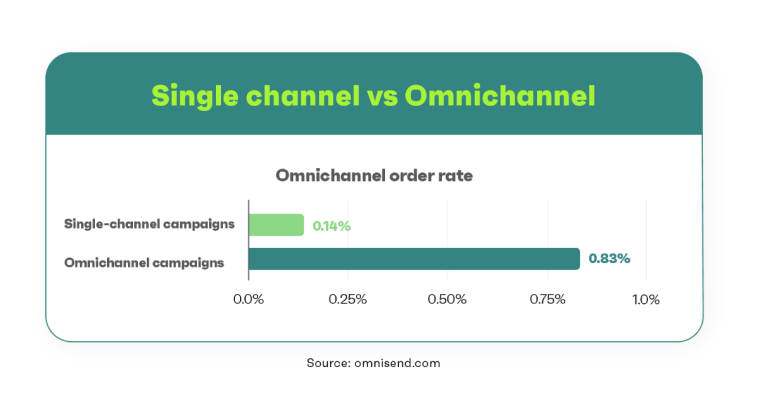Exceptional customer experience is a non-negotiable priority given that a single negative experience can drive significant customer loss. With customers understanding their buying journey and spending power, businesses must stay updated on the most important customer experience trends to stay competitive.
Our team of experts at Business2Community has meticulously put together an array of customer experience trends and vital statistics. This carefully curated article aims to equip your business with actionable strategies, fostering stronger customer relationships, cultivating loyalty, and bolstering retention in today’s dynamic marketplace.
Key Customer Experience Trends
- Using three or more channels in a campaign can lead to a 494% higher order rate.
- 63% of Millennials would switch companies if their communication expectations weren’t met.
- In 2022, the average American was enrolled in approximately 16.6 loyalty programs.
- 82% of customers are willing to share personal data with a business.
- Nearly three-quarters of customers expect brands to understand their needs.
What Are 2025’s Customer Experience Trends?
2025‘s CX trends center on crafting personalized, empathetic engagements while prioritizing the ethical handling of data to forge genuine connections with customers. Let’s delve into this list of 9 customer experience (CX) trends — a blueprint for your business’s growth and success in meeting evolving customer expectations.1. Omnichannel Experiences Drive A Customer Journey
An omnichannel customer experience refers to a customer-centric approach that integrates various channels and touchpoints to deliver a unified and consistent experience.
This approach allows businesses to build stronger relationships with customers by providing them with the flexibility to engage on their terms and receive the same quality service regardless of how or where they interact with the brand. At the same time, you can maintain a consistent brand image and level of service.
According to a 2022 survey by Omnisend, marketers who utilized three or more channels in a campaign experienced a 494% higher order rate compared to those who relied on a single-channel approach.
Businesses must find a balance between investing in human interaction and providing an appealing digital customer experience. 51% of consumers in a 2022 PwC survey were less loyal to a brand when its online shopping experience failed to match the ease and enjoyment of in-person shopping.
Google noted in 2023 that 59% of shoppers preferred to visit stores for product inspection, even if they planned to buy online. It’s clear that consumers seek a seamless shopping experience, regardless of whether they’re shopping online, via apps, or in-store.
Given that 50% of consumers check product inventory before their in-store visits, brands are compelled to embrace an omnichannel experience strategy.
In 2021, a McKinsey report found that over 33% of Americans integrated omnichannel features like purchasing online for in-store pickup into their regular shopping habits. Of these individuals, nearly 64% intended to persist with this behavior.
Omnichannel customer experiences are innovative and increase customer satisfaction because they:
- Integrate diverse channels fluidly.
- Personalize interactions.
- Adapt to changing consumer behaviors.
Consequently, they offer convenience, efficiency, and a cohesive customer journey, catering to evolving consumer needs while anticipating future shifts in technology and preferences.
Notably, younger buyers exhibit the highest enthusiasm for innovative shopping methods. McKinsey research has indicated that most Gen Z consumers don’t adhere to conventional channel distinctions. Rather, they prioritize brands and retailers based on the smoothness of their overall shopping experience.
Blending nostalgic elements with innovative strategies proves a powerful method for engaging customers within omnichannel experiences.
As per a Compere Media report, marketers should delve into tactics that adapt traditional marketing methods to today’s platforms. This approach strives to strike a balance, meeting consumers’ nostalgia while satisfying their appetite for innovation.
2. AI-Powered Personalization is Engaging Target Audiences
AI-driven personalization is a critical solution to meet the rising consumer expectations for tailored experiences.
According to Segment’s State of Personalization 2023 report, over 92% of businesses leveraged AI-powered personalization to fuel growth within their operations. Nonetheless, business leaders still recognized critical challenges, including training gaps, security/compliance issues, organizational inefficiencies, and data quality concerns.
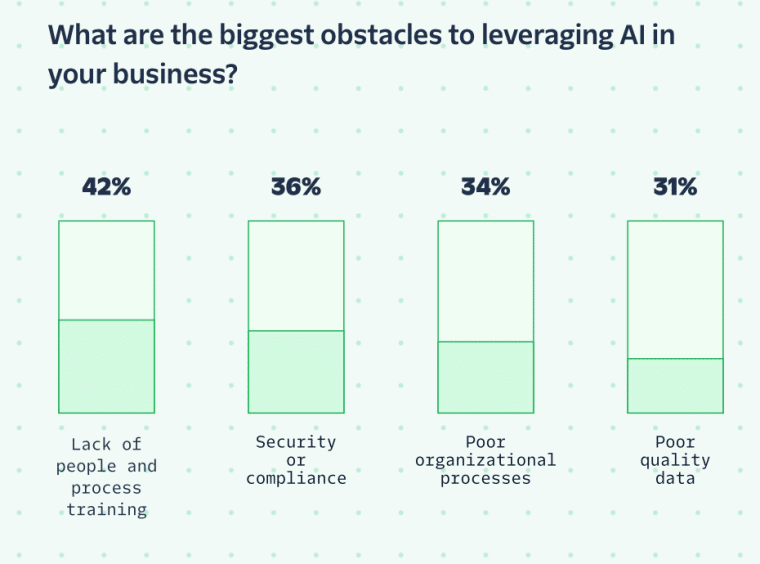
AI-powered personalization in the customer experience can operate in multiple ways, such as:
- Customized recommendations
- Dynamic content
- Predictive analytics
- Behavioral targeting
- Automated customer support
- Optimized customer journey
Artificial intelligence provides customers with a personalized experience by empowering customer service agents with key information and guiding their actions. Moreover, AI-driven personalization enhances these experiences, tailoring interactions based on individual preferences and behaviors.
This shift is reflected in the increased adoption of AI among service decision-makers, rising by 88% since 2020, from 24% to 45% of respondents to a Salesforce survey.
Meanwhile, Zendesk’s Customer Experience CX Trends report in 2023 highlighted that over 70% of customers expected conversational care experiences when interacting with companies.

For 40% of shoppers, regardless of whether they receive help from an AI tool or a human agent, the priority is getting the necessary assistance, as per HubSpot. In this context, chatbots play a crucial role, serving as a cornerstone for AI-driven personalization in customer experiences.
PwC survey findings in 2022 revealed that deployed self-service chatbots can handle 40% of common customer queries. This capability reduces customer churn by enhancing the overall customer experience.
Machine learning (ML) also contributes to improving the customer experience by forecasting customer behaviors. The ability to predict stands as the ultimate goal, enabling businesses to anticipate individual needs and tailor products and services accordingly.
The Harvard Business Review identified seven ML applications that significantly improve customer experiences:
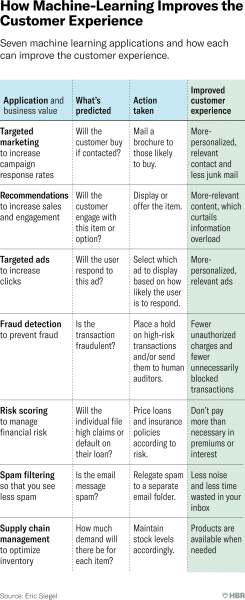
Ultimately, using ML to predict the most relevant content for each individual leads to better recommendations, fewer unwanted emails, minimal spam, and improved search results.
According to Segment’s findings, 41% of consumers are comfortable with AI-driven personalization, while the rest exhibit hesitancy or reluctance toward machine-based interactions. This variance underscores businesses’ need to consider diverse consumer comfort levels when crafting AI-powered personalized experiences.
Starbucks utilizes data analysis and AI to enhance customer experiences. By studying customer data, Starbucks offers personalized suggestions from past orders and preferences. It also sends instant alerts when customers are close to a store or when their preferred drink is ready.
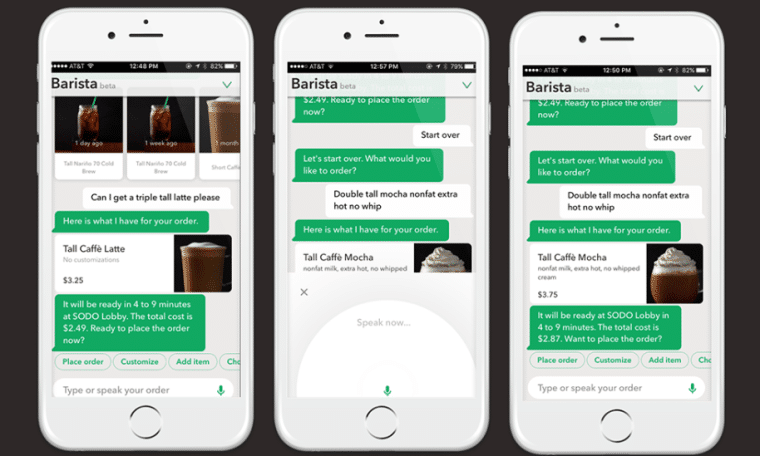
The AI chatbot programming within the Starbucks mobile app uses voice technology and natural language processing enabling users to voice their orders, facilitate payments through linked credit cards or gift cards, and send a request to a nearby store for convenient customer pickup.
3. Evoke Emotions Through Storytelling in Customer Experience
Narrative-driven storytelling stands out as a leading trend in customer experience due to its profound ability to evoke emotions and forge strong connections with audiences.
In fact, emotionally connected customers, as revealed by a Motista study, tend to spend two times or more with their favorite brand.
When a brand’s story deeply resonates with its customers, it enhances the overall customer experience by fostering a deeper connection and sense of loyalty between the brand and its audience.
Customer experience storytelling isn’t merely engaging; it’s a transformative tool for businesses. It allows businesses to build profound customer relationships, nurturing trust and understanding, ultimately influencing future actions.
Airbnb weaves storytelling into its customer experiences by showcasing the unique narratives behind each property. Through engaging visuals and personal anecdotes from hosts, they create an emotional connection and authenticity, offering an immersive experience beyond just a place to stay.
Incorporating Host Stories enhances Airbnb customer experiences by offering a deeper, more personal connection to the accommodations. By sharing these narratives, Airbnb allows guests to understand the essence of each place beyond its physical attributes, fostering a sense of trust and familiarity.

Host stories give guests insights into the local culture and personal touches that make each stay distinctive. This approach empowers guests to make informed decisions, elevating their overall customer experience by creating a more meaningful and personalized connection to their chosen accommodations.
4. Streamlining Form Processes is Key
Consumers prioritize streamlined forms processes as a crucial aspect of their customer service experience due to its direct influence on convenience and efficiency. If a form or any info-gathering process with a company gets too complicated, 53% of customers will end the interaction, noted a Smart Communications 2023 study.
Simplifying and optimizing form processes can meet customers’ desire for hassle-free interactions, reducing frustration and time spent on tedious tasks. For example, 35% of customers prefer web forms over fillable PDFs and paper because of their convenience.
Millennials exhibit the lowest tolerance for poor communication and data collection experiences compared to other generations. In fact, 63% of them would switch from a company if the communications experience didn’t meet their expectations.

5. Customers Engage with Self-Service Options Online
Self-service solutions have become integral in enhancing customer experiences because they offer efficient resolutions and customer engagement, all while minimizing costs for service organizations.
According to Salesforce in 2023, customers increasingly preferred self-service tools, with 59% favoring them for basic inquiries or issues.
Self-service portals testify to a company’s dedication to meeting customer expectations. As per Zendesk, 91% of consumers are willing to utilize an online knowledge base if it’s readily available and personalized to meet their specific needs.
Moreover, 40% of customers resort to contacting a call center only after exhausting self-service options in search of their answers. Therefore, by offering more self-service options, businesses improve the overall customer experience and empower individuals to find solutions autonomously.
Here’s a list of some popular self-service platforms recognized for their effectiveness in providing self-service solutions and improving overall customer experiences:
- Zendesk
- Zoho Desk
- Salesforce Service Cloud
- HubSpot Service Hub
- Intercom
6. Customer Relationships are Built Through Customer Loyalty Programs
The global loyalty management market reached $9.17 billion in 2022 and is expected to expand at a CAGR of 9.7% from 2023 to 2030. Loyalty management solutions equip businesses with essential tools to create, execute, and oversee effective loyalty programs.
Through mobile apps and online platforms, reward programs allow retail businesses to engage with loyal customers at multiple touchpoints. Digital loyalty cards, special offers, and mobile wallets are pivotal in modern loyalty programs, heightening their popularity in the retail and hospitality sectors.
Consider Loopy Loyalty, an innovative customer loyalty software enabling businesses to connect with customers via digital stamp cards. It streamlines the addition of loyalty cards to Apple or Google Play wallets, elevating the customer experience.
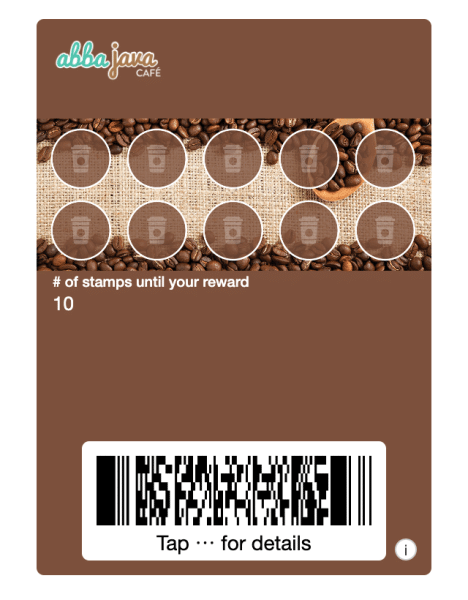
Brands can leverage incentives, such as rewards and customer loyalty programs to enhance the customer experience and encourage customer retention. For instance, 70% of American consumers view loyalty programs as a primary reason for remaining loyal to a brand.
Furthermore, consumer behavior trends illustrate a shift towards exploring new brands aligning with their values. Google findings revealed that:
- 30% of consumers spend more time deciding
- 30% explore diverse brands
- 29% consider expanded store options
Google data also shows customers’ increased interest in loyalty programs at the start of 2023. January 2023 witnessed a 50% surge in searches for terms like “reward program” and “loyalty points”, surpassing December 2022 volumes, indicating sustained interest extending past the holidays.
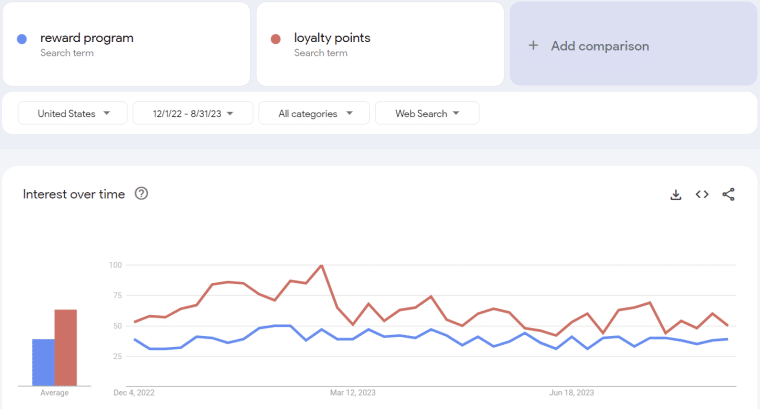
Loyalty programs heavily influence consumer preferences. In fact, 73% of consumers would continue purchasing from companies that raise prices, provided they felt valued as customers.
In 2022, Statista reported that, on average, Americans were members of 16.6 loyalty programs. For customer experience, this means that consumers value incentives, rewards, and personalized offerings. Moreover, providing customers with rewarding interactions will maintain their loyalty.
7. Customer Engagement Through Virtual & Augmented Reality
Virtual and augmented reality technologies revolutionize consumer engagement with products and brands through immersive and interactive experiences.

As consumers’ interest in tech-driven shopping experiences increases, augmented reality, virtual reality, and shoppable videos will gain prominence. The younger demographic leads this trend, showing 2x to 3x higher adoption rates in utilizing emerging media such as social media, virtual try-ons, and online live streams for shopping purposes.
In 2022, the virtual fitting room market was valued at $4.03 billion, with projections indicating growth to $18.31 billion by 2030.
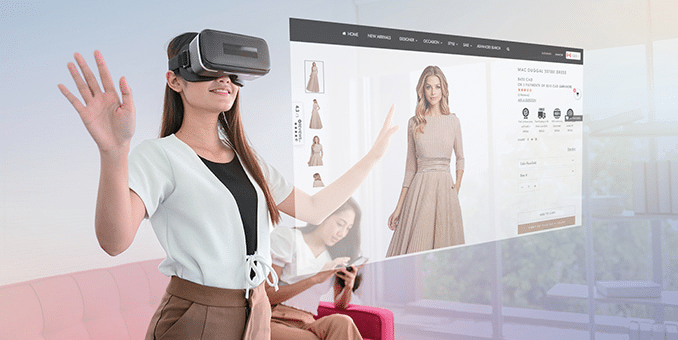
With AR and VR digital customer experience technology, users can determine the ideal size and style of an item prior to the purchasing process. In fact, according to high fashion brand Rebecca Minkoff, around 65% of visitors are more likely to make a purchase after engaging with a product in AR.
Key players in the virtual fitting room software space are:
- ARKit
- PITCOFiT (Shopify App)
- Style.me
- AstraFit
- 3DLOOK
- Klarna Virtual Shopping
8. Data Transparency is Enhancing Customer Loyalty
According to Google’s findings from Kantar’s Global Monitor report, 79% of global consumers are concerned about data protection and data privacy on the internet. Additionally, 72% of respondents feel they are at some level of risk — either very or somewhat — regarding potential personal data breaches by individuals or companies.
However, ensuring transparency and informing customers about data privacy practices can boost customer trust for companies. A PwC survey in 2022 showed that 82% of people are willing to share personal data, which signifies a growing expectation for transparent data practices in customer experiences.
Customers feel more confident sharing personal details such as:
- 61% will share their email address
- 48% will share their birthday and age
- 45% will share their sex/gender identity
- 40% will share their mailing address
- 37% will share their race/ethnicity
- 35% will share their phone number
However, specifics about usage and biometrics are a harder sell, specifically:
- 22% are willing to share product usage data
- 15% will share their current location (via mobile phone)
- 5% will enable facial recognition
- 3% provide a fingerprint
These data-sharing statistics emphasize the importance of clear communication and responsible data handling by brands, fostering trust, and enabling more personalized experiences based on shared information.
Navigating personalization without cookies has become imperative amid evolving privacy regulations. Customers are more aware of their digital consumer privacy, with their concerns transitioning into legislation.
According to a 2022 Adobe survey, customers are open to sharing their data but they want a deeper understanding and control of their data usage.

Companies gearing up for a cookieless future should focus on strategies to uphold a positive customer experience. For example:
- Leveraging first-party data
- Enhancing transparency
- Investing in consent management platforms (CMPs)
- Exploring AI technologies
- Focusing on content quality
- Developing privacy-compliant solutions
9. Proactive Follow-Ups Elevate Post-Purchase Interactions
Without customer feedback, evaluating whether customers have had a positive experience with your product or service becomes challenging. Yet, with the evolution of digital customer experience tools, devising a follow-up strategy has become more efficient, data-driven, and attuned to customer needs.
Salesforce reported in 2023 that 73% of customers expect brands to understand their needs, but 56% feel they’re treated impersonally by most companies. This is where implementing customer feedback surveys for customer responses becomes pivotal.
Proactive follow-up surveys bridge the gap, yielding valuable insights and enabling a more personalized and customer-centric approach to address individual needs.
The Global State of Customer Service report in 2020 by Microsoft highlighted that 89% of global consumers were inclined to provide feedback. This strong inclination among customers to share opinions underscores the importance of engaging them in feedback mechanisms.
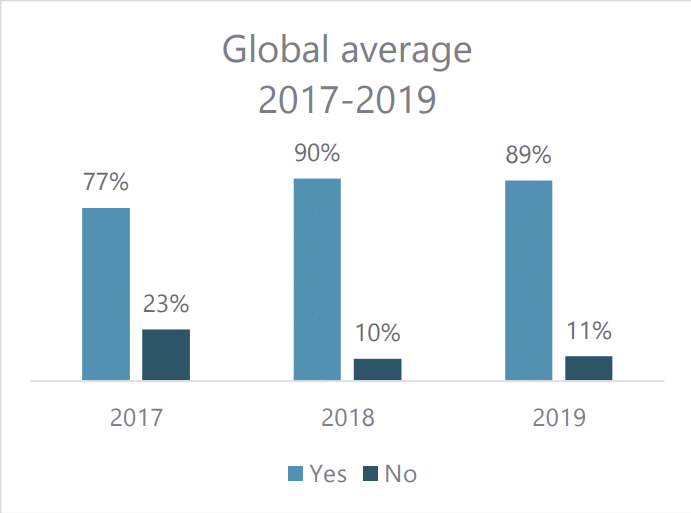
Automating post-experience surveys via email enables businesses to effortlessly cater to customers’ feedback desires. Moreover, harvesting consumer data can be utilized to enhance the overall customer experience
How to Find Customer Experience Trends
These customer experience trends offer significant value and leveraging them effectively is key. However, the analysis doesn’t stop here because new and valuable trends are continually emerging. Let’s take a look at some ways you can proactively discover these evolving trends on your own.
Industry Reports and Surveys
Look for reports and surveys conducted by reputable organizations within your industry. Furthermore, market research companies like Forrester, Gartner, and McKinsey often publish detailed analyses of emerging CX trends. For this article, we also used reports from notable tech companies such as Microsoft, Salesforce, and Zen Desk.
Industry reports and surveys offer valuable insights into customer experience trends, including market dynamics, consumer preferences, customer personas, technology trends, data-driven metrics, future projections, and regulatory updates.
YouTube Channels
YouTube channels can be an excellent source for top customer experience trends as they often feature discussions, insights, and case studies related to CX strategies, innovations, and evolving consumer behaviors.
For example, Bernard Marr’s YouTube channel is a go-to source for valuable customer experience insights, offering expert perspectives on data-driven strategies and emerging trends. Marr’s in-depth analyses and real-world case studies make it a reliable resource for evolving customer experience cx trends.
Events and Conferences
Explore industry events, webinars, and conferences for cutting-edge trends, insights from thought leaders, and valuable connections with industry experts.
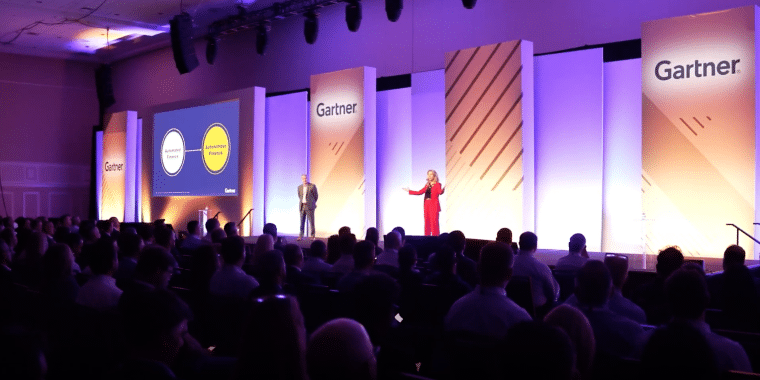
Notable annual summits include:
- Forrester’s CXPA Summit
- Gartner’s CX & Technologies Summit
- Adobe Summit
- Qualtrics X4 Summit
- Oracle’s Modern Customer Experience
- International Customer Experience Awards
The Future of Customer Experience
The future of customer experience isn’t just about transactions; it’s about relationships and loyalty.
Imagine Emma, a regular shopper, exploring an online store for new running shoes. An AI assistant pops up, suggesting personalized options based on their past purchases and fitness choices. Intrigued, Emma visits the store in person.
There, the staff greets her by name, aware of her preferences. They guide her through a fitting, sharing insights on the latest shoe tech. Emma leaves satisfied, feeling valued as a customer.
This is the essence of the evolving customer experience landscape. It’s about leveraging technology to personalize interactions and blending the digital and physical worlds seamlessly. It’s about understanding that each interaction, whether online or in-person, contributes to building trust and loyalty.
The future of customer experiences revolves around these personalized, empathetic encounters and the ethical use of data to create genuine connections. By prioritizing excellence across every touchpoint, businesses don’t just sell products; they foster relationships that endure and grow, resonating with customers’ ever-evolving preferences and values.

